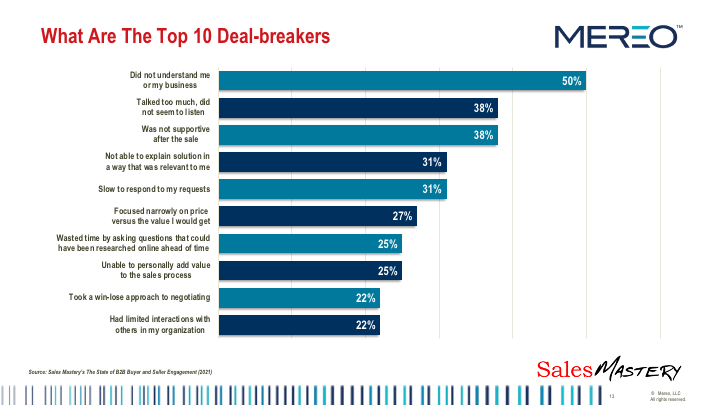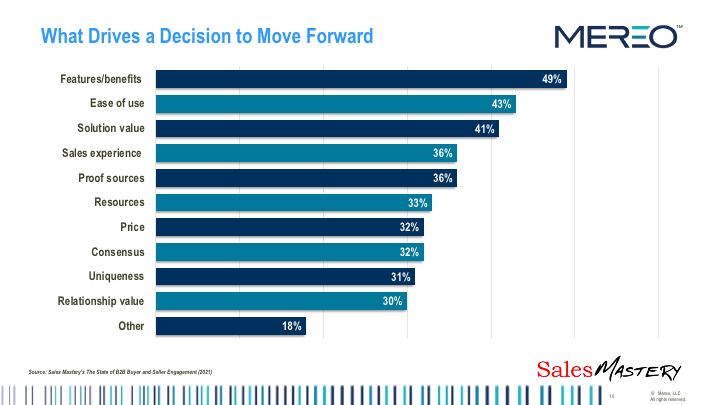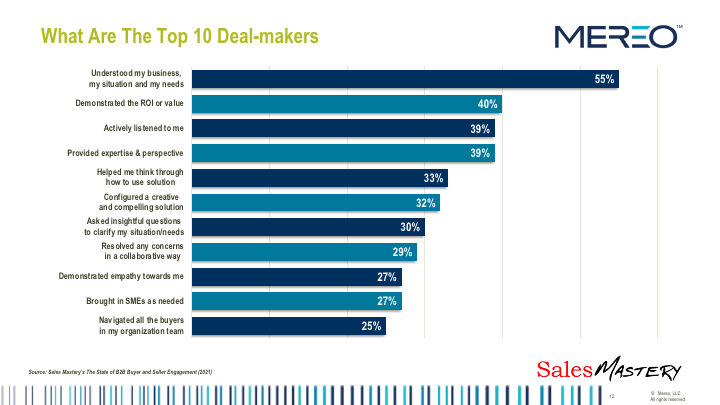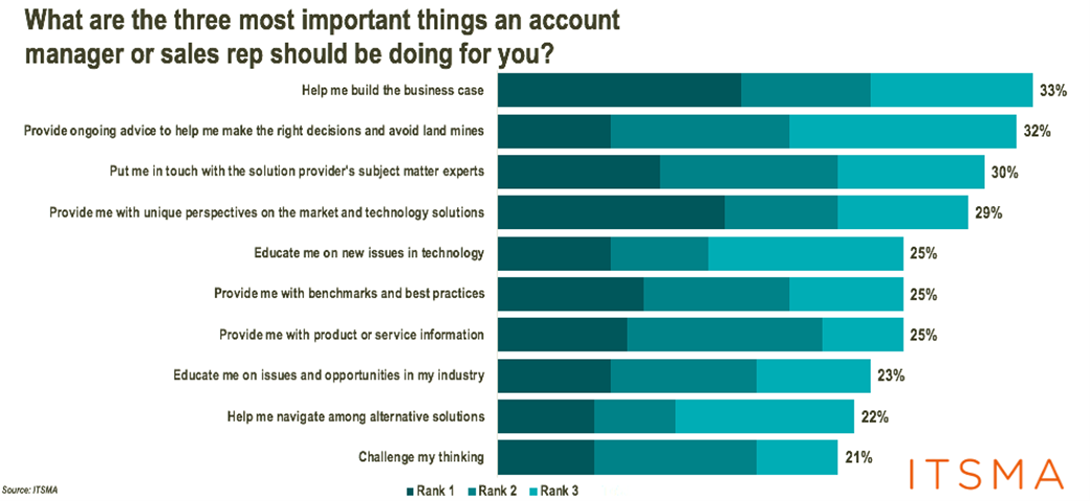These past 11 months of 2022 have brought us changing workplaces, new digital norms, inflation pressures, continued supply chain strains and more. What has all this built up to for 2023? Read on for the Mereo B2B selling forecast for the year ahead.
A STUBBORN CONTINUATION OF SELLING VIA SCREENS
The COVID pandemic had selling professionals donning button-ups atop their pajamas and scrambling into Zoom and Teams meetings to stay connected with buyers. There were few other options. Yet in the two years since, as restrictions have eased, there has not been a sweeping return to in-person selling. Some of this comes from selling organizations looking to cut costs and work with the digital tools they have implemented. But mostly, as my team and I have too experienced, this is coming from buyers themselves.
This is a shame. Face-to-face buyer meetings may cost more in terms of travel and time — but they offer greater returns in relationship-building and selling opportunity. One study even found that in-person sales requests are 34 times more successful than email requests. Something feels off, maybe even a little wrong, about hundreds of thousand-dollar deals taking place across a screen, without either party ever having been in the same physical space together. Is it an amazing feat of technology? Sure. Is there something deeper and more meaningful missing, though? I would argue yes, 100%.
Be that as it may, virtual selling is not going away. So continue to enable your selling teams to do their best in digital formats. Do not ease up on the digital sales training and reinforcement. Nor should you let go of professionalism, even if your salespeople are jumping on their computers from a home office — or a kitchen counter. And remember that all the key selling components matter, from value proposition to expert listening, regardless if they are being exchanged in-person or virtually — maybe even more so.
BRACE FOR AN ECONOMIC SLOWDOWN
The signs exist all around us: supply chains are still tripped up, wallets are tighter as inflation continues to drag (though with signs of turning around) and, worst of all, the housing market is on the decline. In the first half of 2023, business leaders should expect an economic slowdown. This does not mean sellers should despair, though. Most economic experts do not see signs of a severe recession. This situation rather means that you and your teams must brace for a slow, moderate recession.
Be ready to adapt to this sluggish environment — to be a painkiller for buyers rather than a vitamin. Gartner found friction-filled B2B buying journeys are all too common — a staggering 77% of B2B buyers state that their latest purchase was very complex or difficult. So do the deep pre-work for your buyers. Engage them with messaging that is relevant to the moment. Go on the offense against your competitors and be sure that with your buyers’ tighter budgets, they pick your solution and not theirs.
SAY IT WITH ME: ‘REVENUE’
“Sales kickoffs,” “sales enablement,” and even the “chief sales officer” are going the way of a more holistic revenue focus as the whole customer lifecycle is starting to replace the outdated linear sales process.
At Mereo, we are hearing more about revenue kickoffs, about revenue enablement programs, about chief revenue officers. In its 2022 Future of Revenue Enablement study, Mediafly found that innovative companies are transitioning to full-scale revenue enablement strategies and investing in customer success teams (23%), presales teams (18%) and marketers (15%) more, not just the front-line sellers.
Consider how your organization can embrace this holistic approach to better serve your buyer — and to realize sustainable revenue performance.
HERE IS TO A SUCCESSFUL AND FULFILLING 2023
We at Mereo have a lot of exciting plans ahead for 2023. As we continue to innovate and adjust with the times, we stay grounded in Seek to Serve, Not to Sell®. It has guided us for the past 15 years and it will continue to do so no matter the marketplace conditions. Because people will always matter. And supporting them through the thick and thin of business challenges should always come from a place of honesty and authenticity. I encourage you to embrace this approach within your organization as well. Your buyers and your organization will only benefit.
ENABLE YOUR TEAMS TO SEEK TO SERVE™
As you and your fellow business leaders look ahead to 2023, reach out to our expert revenue consultants to address any uncertainties or issues. Could any part of your revenue engine benefit from a boost? Could your messaging or solution management strategy better excel with some finetunes? Let’s talk.













